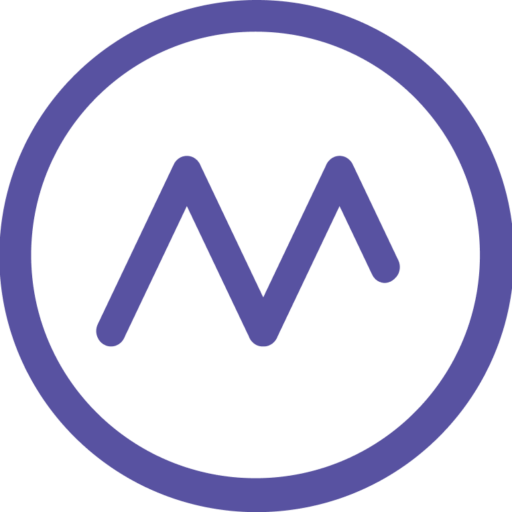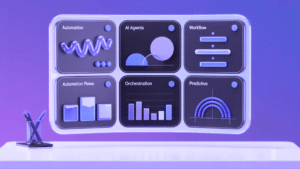Enterprise automation markets are growing rapidly in 2025, with business process automation projected to reach US$15.3 billion globally and segments like intelligent automation showing 10-12% compound annual growth rates. Smart task automation has shifted from simple scripts to AI-driven systems that understand context, make autonomous decisions, and coordinate workflows across entire organizations.
Organizations across Southeast Asia are deploying these systems as core operational infrastructure. Philippine BPO companies, marketing agencies, and enterprise operations teams implementing automation strategies gain competitive advantages in markets where manual processes limit scalability and response time.
Companies monitoring automation adoption patterns—tracking how these technologies affect workflows, customer expectations, and competitive dynamics—position themselves to adapt faster than competitors relying on outdated manual systems.
1. Hyperautomation: Orchestrating Complete Business Processes with Smart Task Automation
Hyperautomation combines robotic process automation (RPA), artificial intelligence, machine learning, process mining, and integration platforms into unified systems that handle complete business processes from initiation to completion.
Process orchestration platforms function as central control systems, routing tasks between tools, enforcing business rules, and monitoring performance across departments. Philippine enterprises in finance, healthcare, and logistics sectors report 30-50% reductions in process completion times after implementing hyperautomation systems.
Competitive intelligence advantage: Organizations tracking competitor automation investments through media monitoring identify strategic capabilities before market leadership shifts become irreversible.
2. AI Agents Replacing Rules-Based Automation
AI agents interpret goals, plan multi-step actions, and adjust strategies based on feedback rather than following pre-programmed rules. These systems handle customer service inquiries, data analysis, workflow optimization, and exception handling by learning from outcomes.
Philippine customer support operations deploying AI agents report up to 35% reduction in error rates and 80% improvement in first-contact resolution compared to rules-based systems. The technology proves particularly valuable in markets like the Philippines where multilingual support and cultural context understanding matter.
Strategic monitoring application: Media intelligence tracking competitor AI agent deployments reveals service level improvements and operational capability changes that signal competitive threats before revenue impacts appear.
3. AI Copilots Embedded in Productivity Platforms
AI copilots operate directly inside Microsoft 365, Google Workspace, Slack, and similar platforms rather than through separate dashboards. Workers interact with automation inside existing workflows—email applications suggest responses, spreadsheet tools identify patterns, document editors provide real-time suggestions.
Philippine marketing agencies managing multi-channel campaigns use embedded copilots for content creation, performance analysis, and client reporting. Metro Manila marketing teams observe substantial improvements in operational efficiency due to automated documentation processes, freeing staff to focus more on strategic and creative tasks rather than manual documentation.
4. Smart Task Automation in Collaboration Tools
Platforms like Slack and Microsoft Teams now integrate AI summarization, knowledge search, and automated incident workflows that convert conversations into structured work items, alerts, and knowledge base updates without manual data transfer.
Philippine software development teams use these integrations to coordinate sprint planning, code reviews, and deployment approvals through chat interfaces while automation handles background coordination. Organizations report 25-40% reduction in time spent on administrative overhead—updating trackers, copying information between systems, and sending status notifications—freeing teams for strategic work requiring human judgment.
5. Low-Code/No-Code Democratizing Automation Creation
Low-code and no-code platforms enable operations, marketing, HR, and finance professionals to design and deploy automations using visual interfaces or natural language descriptions. Many workflow platforms include AI-assisted builders that translate plain language instructions into executable workflows.
Philippine BPO companies and digital agencies report 40-60% faster automation deployment after adopting low-code platforms. Marketing automation adoption among Philippine small businesses reached 56% by late 2023, reflecting rapid democratization of these technologies.
Market intelligence connection: Monitoring which low-code platforms competitors adopt reveals their operational priorities and technological capabilities before these advantages translate into market share gains.
6. Predictive Decision-Making Beyond Task Execution
Smart task automation in 2025 moves beyond simple triggers to make predictive decisions using analytics, process mining, and real-time data. Systems prioritize work, route requests, flag exceptions, and suggest optimal actions rather than merely executing predefined steps.
Southeast Asian e-commerce operations use predictive automation for inventory management, dynamic pricing, and delivery optimization. Philippine retail operations implementing AI-driven inventory systems report 20-30% cost reductions through automated demand forecasting and replenishment.
Strategic advantage: Real-time media monitoring complements predictive systems by tracking external signals—competitor moves, regulatory changes, customer sentiment shifts—that automated internal systems cannot detect.
7. Human-in-the-Loop Governance Frameworks
Modern platforms include exception queues, assisted decision interfaces, audit trails, and role-based controls that allow humans to supervise, override, or validate AI decisions. Systems flag edge cases, unusual patterns, or high-stakes decisions for human review rather than processing everything autonomously.
Philippine financial services and healthcare organizations use human-in-the-loop designs to meet compliance requirements while scaling automation aggressively. Media monitoring provides early warning when automated systems generate customer complaints, negative sentiment, or public controversy requiring immediate intervention.
8. Natural Language Workflow Creation with Smart Task Automation
Many automation systems in 2025 accept instructions in natural language rather than requiring programming knowledge or visual workflow builders. Workers describe desired automation—”Send stakeholder summary emails every Friday with this week’s metrics”—and systems translate descriptions into executable workflows.
This interface expands automation access to subject matter experts who understand processes intimately but lack technical skills. Vendor reports and internal estimates indicate substantial acceleration in automation iteration cycles when subject matter experts modify workflows through natural language rather than technical interfaces.
9. Task Reshaping Rather Than Job Elimination
Research indicates AI and automation can technically affect a majority of work tasks, particularly repetitive and information-processing activities. However, the pattern emerging across organizations shows task reshaping rather than wholesale role elimination, though workforce impacts vary by sector and company.
Philippine BPO companies implementing automation show mixed workforce impacts: while aggregate employment continues growing, roles are shifting toward higher-value activities requiring cultural understanding, complex problem-solving, and relationship management. Industry data shows approximately 8% of organizations reduced headcount due to AI adoption, while most focus on reassignment and upskilling programs.
10. Always-On Digital Operations
Always-on digital operations enable systems to monitor, analyze, and respond to events continuously without human presence. Customer inquiries receive instant responses regardless of time zones. System incidents trigger automated diagnostics and remediation. Market changes prompt automatic workflow adjustments.
Philippine outsourcing operations serving North American, European, and Asian clients simultaneously use always-on automation to maintain service levels across time zones. Organizations report 40-60% improvement in first-response times after implementing automated triage and initial resolution systems.
Competitive context: Companies unable to match these operational standards risk losing market share to more automated competitors—making competitive intelligence tracking automation adoption patterns critical for strategic planning.
Strategic Intelligence in Automated Markets
Smart task automation fundamentally transforms how customers interact with brands, how competitors differentiate themselves, and how entire markets evolve. Organizations tracking these shifts through systematic media monitoring gain visibility into emerging opportunities and threats before they fully materialize.
The automation trends reshaping work in 2025 create strategic imperatives:
Monitor competitor automation capabilities. Media intelligence reveals when competitors deploy AI agents, implement hyperautomation, or achieve always-on operations—signaling capability improvements that will translate into service level advantages and market share shifts.
Track customer expectation changes. As automation becomes standard across industries, customer expectations for instant response, 24/7 availability, and personalized service increase. Organizations monitoring these evolving expectations adapt service delivery before customer satisfaction declines.
Identify automation vendor momentum. Media coverage patterns reveal which automation platforms, AI tools, and integration technologies are gaining enterprise adoption. Early identification of emerging standards prevents costly investments in soon-to-be-obsolete technologies.
Detect automation-driven disruption signals. New competitors leveraging automation advantages to undercut pricing, improve service levels, or enter adjacent markets often appear in industry coverage before financial impacts materialize. Early detection enables proactive strategic responses rather than reactive crisis management.
Frequently Asked Questions About Smart Task Automation
What is smart task automation?
Smart task automation uses AI, machine learning, and integration platforms to automate business processes that adapt to context, make decisions, and coordinate workflows across multiple systems. Unlike traditional automation following rigid rules, smart automation interprets goals, learns from outcomes, and adjusts strategies based on changing conditions.
How does hyperautomation differ from regular automation?
Hyperautomation combines multiple technologies—RPA, AI, machine learning, process mining, and integration platforms—into orchestrated systems automating entire workflows rather than isolated tasks. Regular automation handles single, repetitive actions through predefined rules, while hyperautomation coordinates complex, multi-step processes across departments with minimal human intervention.
What are AI agents in workplace automation?
AI agents are autonomous systems that interpret objectives, plan multi-step actions, and adjust approaches based on feedback rather than following pre-programmed rules. Philippine customer support operations deploying AI agents report up to 35% reduction in error rates and significant improvements in first-contact resolution compared to rules-based automation systems.
Can non-technical employees create automation workflows?
Yes. Low-code and no-code platforms enable operations, marketing, HR, and finance professionals to design and deploy automations using visual interfaces or natural language descriptions. Philippine BPO companies and digital agencies report 40-60% faster automation deployment after adopting low-code platforms compared to traditional development approaches.
How does automation affect employment in the Philippines?
Current automation trends focus on task reshaping rather than wholesale job elimination, though impacts vary by organization. Philippine BPO companies show mixed workforce impacts: aggregate employment continues growing as roles shift toward higher-value activities, though approximately 8% of organizations reduced headcount due to AI adoption while most focus on upskilling and reassignment programs.
What is human-in-the-loop automation?
Human-in-the-loop automation includes oversight mechanisms where AI systems flag exceptions, unusual patterns, or high-stakes decisions for human review rather than processing everything autonomously. This governance approach includes exception queues, assisted decision interfaces, audit trails, and role-based controls allowing humans to supervise, validate, or override automated decisions when necessary.
How do AI copilots differ from standalone automation tools?
AI copilots integrate directly into existing productivity platforms like Microsoft 365, Google Workspace, and Slack, automating tasks within users’ regular workflows without requiring separate applications. Philippine marketing agencies report substantial improvements in operational efficiency after deploying embedded AI copilots, freeing staff to focus more on strategic and creative tasks rather than manual documentation.
What skills do employees need to work with automation systems?
The most in-demand skills combine process knowledge, data literacy, prompt design, and the ability to collaborate effectively with AI agents and automation platforms. Employees increasingly function as orchestrators who define goals, validate automated outputs, handle exceptions, and make strategic decisions informed by automated analysis.
How can companies track competitor automation adoption?
Media monitoring reveals when competitors deploy AI agents, implement hyperautomation, or achieve always-on operations through press releases, industry coverage, job postings, and technology vendor case studies. Organizations monitoring automation vendor mentions, conference presentations, and partnership announcements gain early visibility into competitor technological advantages.
What signals indicate automation-driven market disruption?
Key signals include new competitors achieving significantly faster response times, lower pricing without quality degradation, 24/7 service availability, and rapid geographic expansion without proportional headcount growth. Media coverage patterns showing startups or adjacent competitors investing heavily in automation platforms often precede market share disruption.
How does media monitoring complement automation systems?
Automation handles internal process optimization, but media monitoring tracks external signals that automated systems cannot detect—competitor moves, regulatory changes, customer sentiment shifts, emerging technologies, and crisis indicators. This combination of internal automation and external intelligence provides comprehensive operational and strategic visibility in increasingly automated markets.
Track how automation trends reshape your competitive landscape before your competitors do. Media Meter’s real-time monitoring reveals emerging automation adoption across your industry, helping you identify market shifts, competitive threats, and strategic opportunities as they develop. Contact us for inquiries or view our sample media reports to discover how competitive intelligence keeps you ahead in increasingly automated markets.





